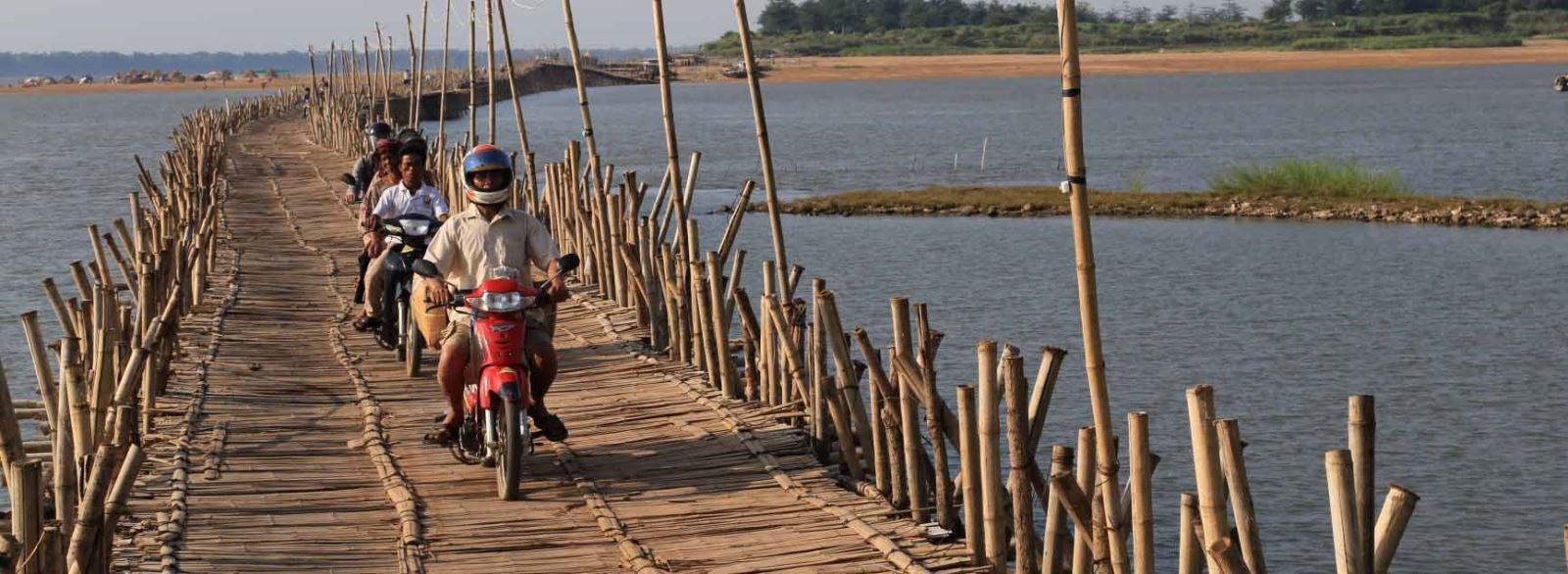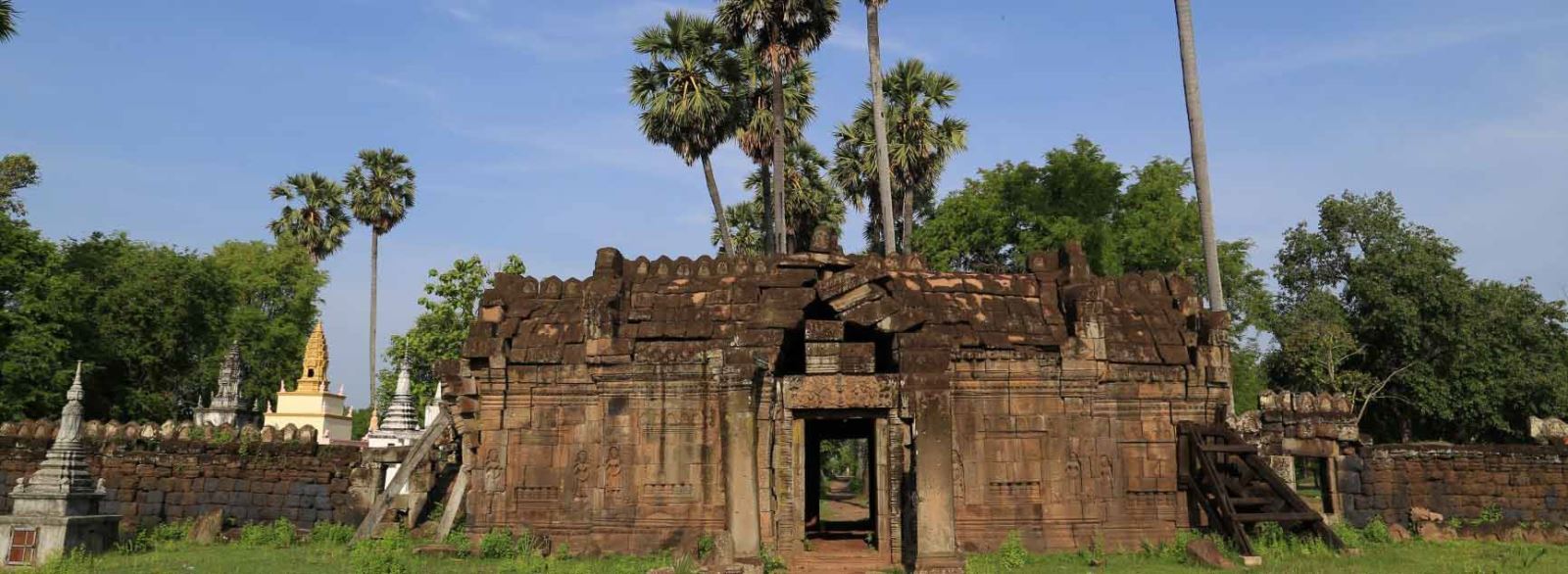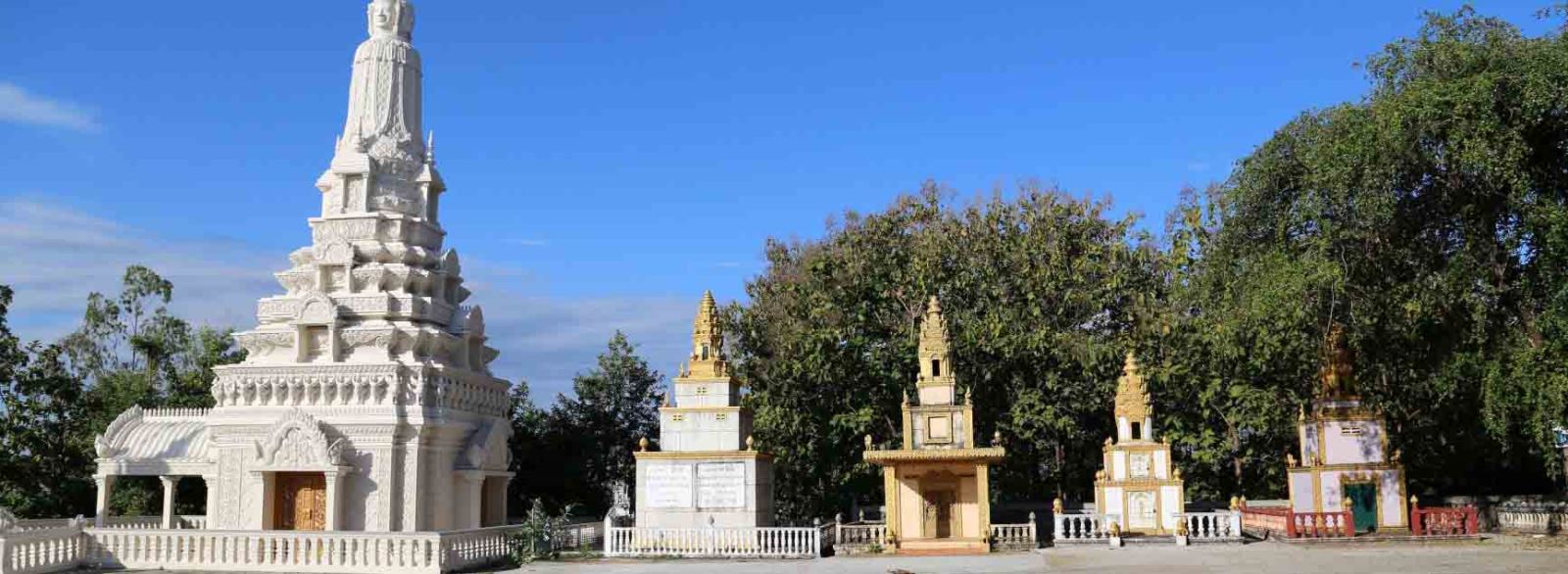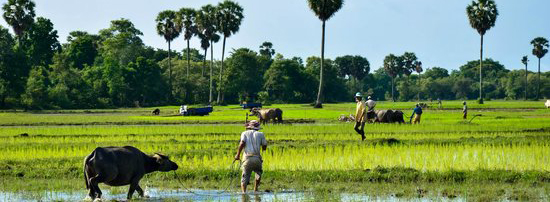FROM HALONG BAY TO THE TEMPLES OF ANGKOR - CAMBODIA
The magic of Halong Bay, Tam Coc postcard picture, the old-fashioned charm of the streets
Kampong Cham is a Cambodian city, capital of its namesake province. Located in the east of the country on the banks of the Mekong, with a population of about 63,771 people, this city has the first bridge ever built in Cambodia connecting Kampong Cham to Tbong Khmum. Its name refers to the Cham people, a group of Muslim origin. In Khmer, the word Kampong means "riverside" or "port". Kampong Cham kept its French colonial charm. This city lies 124 kms northeast of Phnom Penh, 250 kms southeast of Siem Reap and 120 kms from Kampong Thom.
The best time to travel in this region is between October and the end of March when the weather is dry and pleasant. In April and May, temperatures can reach 36°C.
Located in front of the city, this lush island attracts nature lovers with its vegetable gardens and its cheerful community. Koh Pen is a magical island that offers stunning views of nature, cultures and rice paddies, and also including Cambodian Buddhist culture, and local activities.

This Buddhist temple was built in the 11th century at the gateway to Kampong Cham. It now houses a vat Theravada, a Buddhist temple, built within the walls of an antique Khmer temple. A prime example of the changing nature of holy places in Cambodia over the centuries.

At the top of the mountains, you can see the whole Kampong Cham, beautiful and primitive. Phnom Srey and Phnom Pros temples are historic sites showcasing the invaluable Khmer culture and heritage. There are also several legends about these hills. If you’re an early bird, don’t miss the sunrise view.

After a long walk through the history and legends of the temples near Kampong Cham, we invite you to discover the village of Cheung Kok. The locals will introduce you to their rural life and local craft, including the weaving of silk kramas.

The magic of Halong Bay, Tam Coc postcard picture, the old-fashioned charm of the streets
From temples of Angkor to the Royal Palace, from lakeside villages to primitive forests,